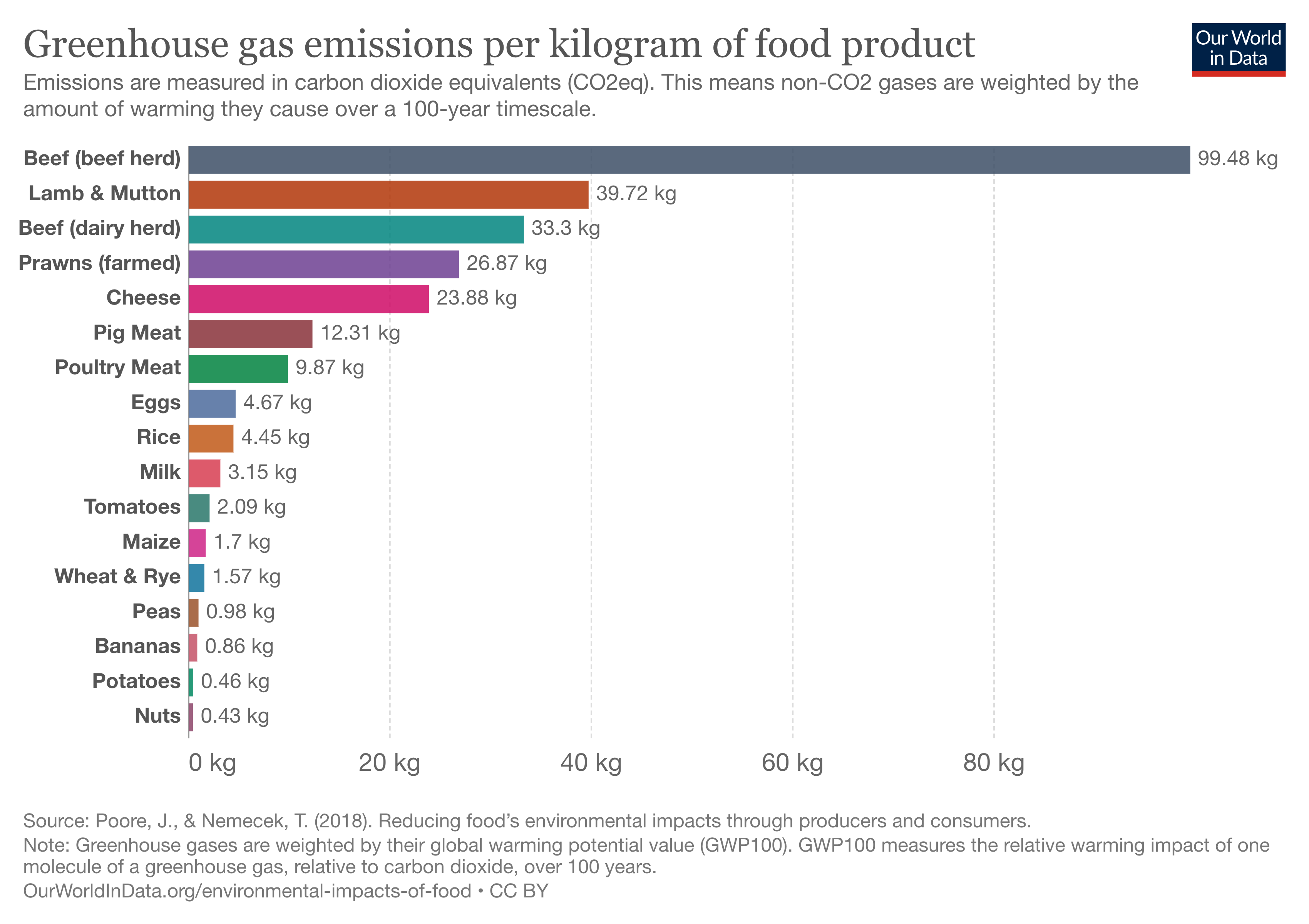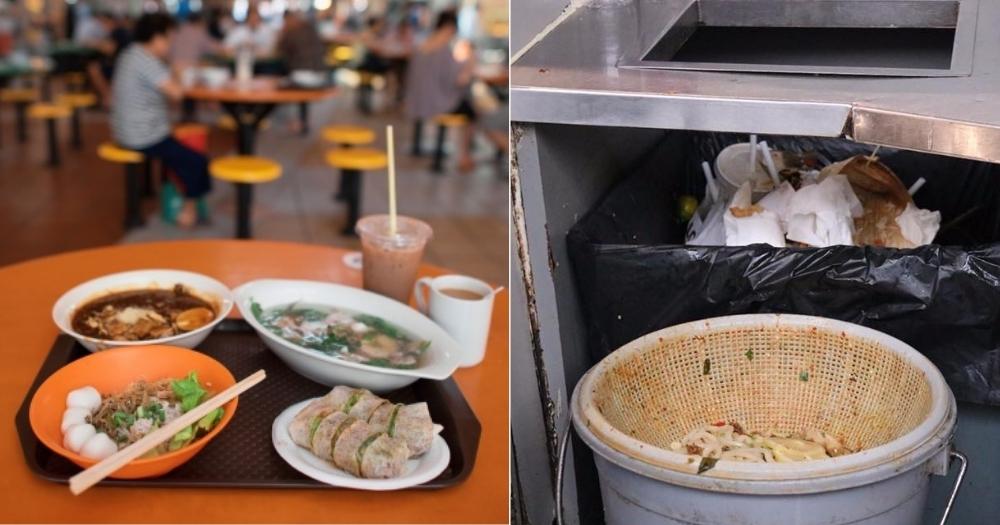By now, you would have heard about how what you eat has an impact on the climate.
Documentaries such as "Cowspiracy" have brought attention to the carbon footprint of our diet, and meatless meat has since hit the shelves in Singapore’s supermarkets.
Besides changing what you eat, there is another way to create environmental impact with your food choices — and that is by reducing how much food you throw out.
You might even get attractive funding to turn some brilliant zero food waste ideas into a reality.
Emissions on g-astronomical proportions
Though many of the calls to reduce greenhouse gas emissions understandably focus on fossil-fuel dependent industries like oil and gas, it is lesser known that the food industry leaves behind a significant carbon footprint too.
Here’s a snapshot of facts:
- 26 per cent of global greenhouse gas emissions arise from food production
- Half of the world’s habitable land is used for agriculture
- 70 per cent of global freshwater withdrawals are used in agriculture
 Image via Our World in Data.
Image via Our World in Data.
Getting the food onto our plates leaves a huge carbon footprint too.
One study from Nature Food found that of the emissions from the entire food supply chain, transportation makes up 20 per cent.
Researchers of the study specified that in 2017, that number was 3 gigatonnes, or 3 billion tonnes.
It does not stop there. Desserts are not the only thing that comes after a meal.
The UN Environment Program estimates that food waste contributes to 10 per cent of greenhouse gas emissions.
The decomposition of food waste releases methane gas, a heat-trapping greenhouse gas that is 30 times more potent than carbon dioxide.
It’s not just food we waste when we bin it, but all the resources and energy it took to produce and get it to our plates.
All of which come with a carbon cost.
Singapore wastes millions of kilograms of food
Food waste accounts for about 12 per cent of the total waste generated here in Singapore.
Growing up, my mom would often nag at me to finish all my food. I recall getting frustrated (like any other kid would).
“It was just a handful of rice. Doesn’t even amount to one spoonful”, I would grumble to myself.
It adds up, however.
In 2019, 744 million kg of food ended up in the trash.
That is about two bowls of rice per person per day.
In 2021, that number rose to 817 million kg.
 Image via NEA.
Image via NEA.
What’s more, 90 per cent of our food travels long distances to find a spot on our plates, exacerbating the problem of our food-related carbon footprint.
Why do we waste so much food?
Reflecting on my habits now, I realised that I often end up wasting food because of trivial reasons.
Sometimes the food is too spicy for my liking or I find in them an ingredient I dislike (ew, coriander).
When I spoke to fellow Singaporeans, it seems to be just as unassuming for them:
“Sometimes when my mum orders takeaway for meals, and I don’t really like it – like the rice is very dry, so hard to finish.” - Audrey, Nanyang Polytechnic, Year 3
“My family loves this fish curry from a prata stall near my house, so whenever we buy from the stall we will save half the portion to have it with our lunch or dinner. Sometimes, it slips our mind that we had saved the curry or my mom will cook dishes with a lot of gravy. So [in the end] the curry is not suited to have with our meal anymore” - Rachel, Nanyang Technological University, Year 4
“One time… I accidentally ordered carbonara instead of bolognese on a food delivery app. Since I have a severe case of lactose intolerance, I decided to throw away the carbonara for my toilet’s safety.” - Russell, Singapore Polytechnic, Year 3
“My mom likes to buy items when they are on sale, and sometimes the older ones get pushed to the back of the shelves and we forget about them. They end up going stale and we have to throw them out.” - Bryan, National University of Singapore, Year 4
Yet it seems, thanks to ingrained wisdom from our parents nagging, we are all aware that wasting food is bad.
It is comforting that we try to adjust our behaviour to avoid it.
For example, Russell shared with me that one way to reduce food waste is to be mindful and order only what one can finish.
“We know our bodies best”, he told me.
For me, I try to remember to request food-handlers to leave out the stuff I dislike, or to separate the chilli from my meal.
While personal actions matter, we can do so much more with scalable solutions.
Take Bryan’s idea, for example. When I asked him how he would curb food waste arising from his mother’s habits, he had an interesting thought:
“I wish there was an app that could help collate the expiry dates of food items at home. The app could send notifications to our phones when the expiry date of an item is near”, Bryan shared.
Imagine if his idea was turned into a real business and actually made into an app people could use.
It would do so much to help reduce household food waste across the country.
Solutions need not be too technical either.
Back in my school, food waste used to be a big problem in the dining halls.
Since meals were served buffet-style, people were loading up trays with plates of food that they ended up not finishing and throwing away.
The solution? They took away the trays.
It limited how much food people could take, since they could only take as much as they could carry with a plate in each hand.
A simple intervention like that went a long way in dramatically reducing food wastage in the dining halls.
Creating larger-scale solutions with DBS Foundation and NEA
If you have an out-of-the-box solution like these to tackle our food waste problem, DBS Foundation and NEA are offering you a chance to pilot your ideas and put them to action.
This year, DBS Foundation has partnered with NEA to launch the Hungry for Change Challenge.
The challenge is a programme under the DBS Foundation new “Community Impact” chapter which focuses on preparing communities for the future through building future-ready skills and reducing food waste.
In the nationwide competition, youths will get the chance to ideate, develop and implement impactful solutions to reduce food waste.
Participants can run free with creativity as solutions from all disciplines, including design, behavioural interventions and technological innovations, are welcome.
The top 10 ideas will be invited for a pitch day, where teams will have the opportunity to share more about their innovation with a panel of judges.
To ensure the practicality of ideas, shortlisted teams will have to secure corporate partners to pilot their ideas with.
The five most innovative and impactful ideas will be supported for piloting with a funding of up to S$25,000 each from DBS Foundation.
They will also get to work with NEA, tapping on its expertise to fine-tune their innovation.
The challenge is open to current students and recent alumni of Institutes of Higher Learning across Singapore, and participants must sign up in teams of at least four persons.
If all these have stirred up an appetite for innovation, those interested can submit their proposals at the Hungry for Change website before Oct. 31, 2022.
As the International Panel on Climate Change wrote, the time for action is now.
Top image via Visit Singapore, Madpuppets II/Facebook
This sponsored article by DBS made this writer think twice about getting a larger portion size when he thought he was hungry during lunch.
If you like what you read, follow us on Facebook, Instagram, Twitter and Telegram to get the latest updates.
